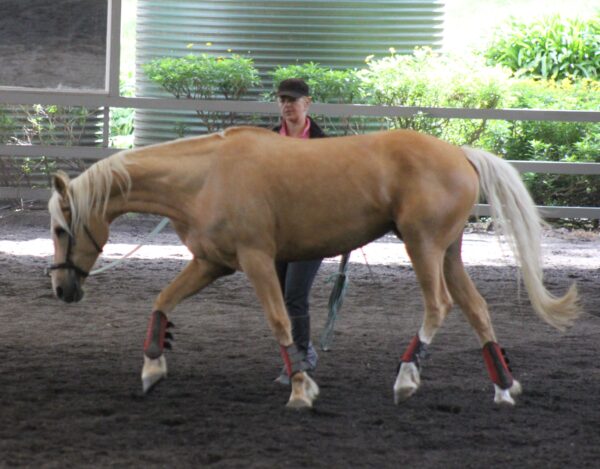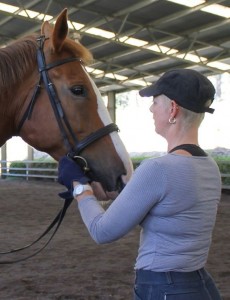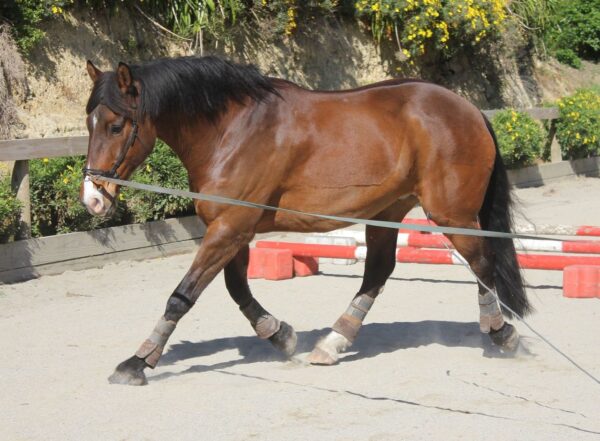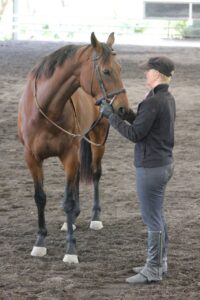Horse Training in Lightness

With over 35 years of experience in the equestrian world, Leanne Williams has dedicated her life to understanding and nurturing the bond between horse and rider.
Since 1993, she has trained a diverse range of horses, learning from each unique partnership along the way.
Leanne holds Equestrian Australia Level 3 Dressage coaching qualifications and is a Licensed teacher in Philippe Karl's School of Légèreté, showcasing her commitment to both classical techniques and innovative training methods.
Having competed at Grand Prix level, Leanne has proudly represented both Australia and Victoria, bringing her expertise and passion to every event. Her talent extends beyond competition; she has successfully trained many homebred horses, as well as various breeds, to the FEI level.
At Avoca Park with Leanne and her team you will find a wealth of knowledge, personalized training programs, and a dedication to helping both horses and riders reach their full potential.
Join us on this journey of growth, learning, and success in the world of dressage and the joy of helping ALL horses be the best version of themselves.
Fill in the form below to enquire about our Horse Training availability.
Training Fees:
$90* per day
or
A week of training (& Agistment): $650* (per week)
*All prices listed above do not include our “Feed Fee”.
Avoca Park uses our Feed Analysis Calculator to calculate the exact cost of feeding each horse on site. We do not charge any more than our cost price.
When Booking:
There is an upfront holding fee deposit of $200, we will send out an invoice after we receive your application. The $200 will be deducted from your training fees upon further invoice. We will ask for an upfront payment of 3 weeks prior to the arrival of your horse.
Leanne's Five Steps Process to Training in Lightness
Leanne has dedicated her life’s work to the best and kindest training procedures for the most successful results.
It all starts with 5 simple steps...
Intro to Cavesson

Cavesson work aids horses in developing their strength, improving balance, and improving suppleness, all of which teaches them to use their bodies more sustainably and comfortably (for us and them) for riding.
By working on these points, we create horses with an increased performance life.
Lunging Inc Cavalletti

During lunging, we introduce movement whilst maintaining a relaxed posture while we assess the muscular development of the horse.
It is the first time we get to look at the natural balance of the horse while moving.
Including Cavalletti:
Cavelletti training on the lunge is a wonderful way of building confidence, co-ordination, bascule (lowering of one end while raising the other), strength and symmetry in your horse.
Mouthing Process

Part 1: Contact
Our method involves no backward actions on the mouth, instead, all actions are in an upward direction – as a rule, up the line of the cheek piece.
Part 2: Balance
For the horse to have a truly relaxed mouth we need to be able to maintain as much balance as possible laterally (right/left) and longitudinally (forwards/backwards) and diagonally in all positions.
Part 3: Bend
During halt, develop neck bend of 45 to 90 degrees to the body, without poll flexion. There should be no loss of balance during this process.
Part 4: Extension
Extending the neck forwards and downwards, so that the poll is lower than the withers, without losing balance over the shoulders.
In-Hand Work

Once the horse is confident with all initial exercises, both from the front and from the side (left and right) we can add movement (walk & trot) while working on the contact, balance, bend and neck extension.
We start with the basics but with work, you can begin all the lateral movements such as shoulder in, travers, renvers, half pass and walk pirouettes.
This ultimately leads to the development of the piaffe and passage exercises.
Mounting & Riding

The ultimate outcome for the mounting process that we have designed, is for the horses to stand so quietly that any person of any age, or ability, can mount.
Once we reach the ridden stage, we revisit previous steps while riding to ensure the horse understands that we are asking for the same things under saddle as we did on the ground.
The first four stages of training should not be forgotten and always be re-visited when necessary.
Training support available at Avoca Park with
Leanne Williams
Weanling Foundation Training

Our Foundation Training introduces weanlings to all the necessary basics of life that they will need as a well-trained adult horse.
Duration: 3 weeks (Recommended)
Includes:
**Catching & Leading
**Tying Up
**Handling Legs & Hooves
**Washing & Rugging
Training Issues/Rehab

Does your horse have problem behaviours in-hand and/or under saddle?
Is your horse difficult to bridle?
Or difficult to mount?
Is your horse 'lazy' or 'pushy?'
Do they feel crooked, tense or nervous?
Our program for training issues is tailored to you and your horse's specific needs....
Duration: Depending on horse. Minimum 3 weeks
Float Training

At Avoca Park, we have created a training program for teaching horses to load on and off floats and trucks.
Our systematic process enables horses to fully understand that they won't be forced, but educated into understanding it is choice.
Our step by step system allows horses the time to confident in the whole loading process.
Dressage in Lightness Online

Dressage in Lightness Online is a platform designed by Leanne Williams which is dedicated to helping owners train their own mounts in safe and productive steps.
It is an online educational platform with over 500 videos of
Leanne working with horses from the moment they arrive on the property for training until the final day they leave.
There is FULL TRANSPARENCY in our program.












